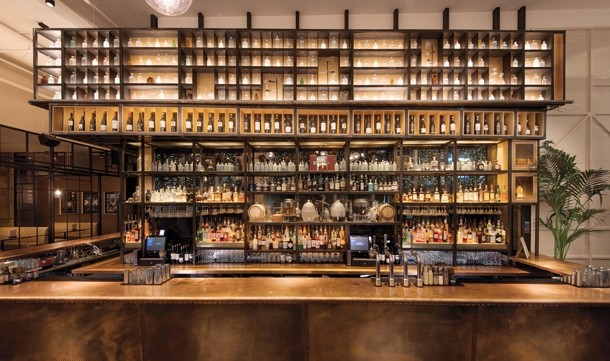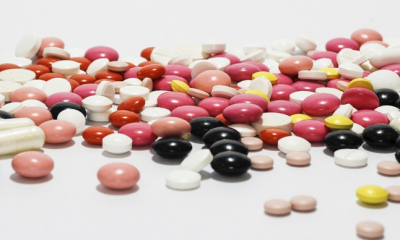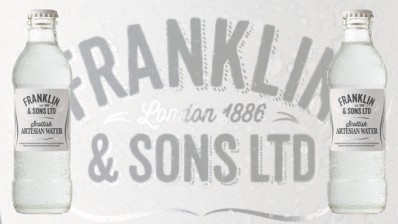Drinks
Back bars: Harnessing your shop window on the world

All of us at one time or another have entered a pub to find the back bar loaded with past-their-best glasses and bags of snacks, but with no drinks menu anywhere in sight.
This is a lost opportunity for the licensee, as the back bar should be the marketing showcase for any establishment. Putting together a well-stocked and merchandised back bar can not only increase consumer spend but also allow the promotion of higher-margin products that can boost the bottom line.
Every licensee needs to look closely at this area and make some crucial decisions. Space is often limited so publicans have to decide on such matters as: do they focus on spirits, showcase a new product or highlight a soft drinks offer?
Shop window
“The back bar is the shop window and it is about selling what the publican wants to sell,” says Paul Pavli, managing director of the Mercury pubs division at Punch.
“I have seen pubs with hundreds of bags of crisps on display taking up valuable space. Also what should not be on the back bar is empty glasses and I see a lot of that.”
As pubs come in all shapes and sizes, so do back bars, and Pavli advises every publican to fit their offer to their particular bar and local customer base.
“The back bar needs to be bespoke for every pub and the licensee needs to make it work,” says Pavli.
“The area is about making the consumer do something different, otherwise it doesn’t work. It is to get the consumer to trade up.”
Sales
One frustration that he expresses is that publicans are not considering the impact of the back bar on sales effectively enough. In particular, he questions the decision on what spirits to serve on the Optics behind the bar.
“I often say how much of that do you sell? When do you sell it and why is it on an Optic?” he says.
“It is about whatever the local demographic says that bar needs to have. It might be TV sports or might be a wall that’s pushing craft beer.”
High margins
The back bar is an ideal place to push higher-margin products and promote new items. If the pub is tied for beer and already has strong sales then it would be more profitable to showcase an item with a better GP margin that is not tied.
“Spirits is where a lot of publicans will make money and often a pub that is free-of-tie will do better by selling this,“ he suggests.
“But don’t put a spirit there that does not make you much money. You need to put in the forefront of people’s mind the products that make you the most money and that give value to the customer.”
Premium
He says pubs should look closely at offering premium spirits because consumers are becoming increasingly demanding about what they want.
“Traditional pubs are quite scared of putting on premium spirits. If someone wants to come out on a Friday night and trade up to a premium spirit, at least let them be able to,” he says.
With weekend consumption being more indulgent, he also advises licensees to consider changing the back bar between the week and weekends to influence consumer behaviour. The reason is simple: pubs don’t sell the same products on a Saturday as they do on a Monday.
Wallpaper
“If you are a consumer that goes into a pub three times a week then, after about three weeks, it all becomes wallpaper. You have to get it so someone sees something
differently and recognises that you have got some new gins in or a cocktail menu out.”
As gin is very on-trend at the moment, licensees should consider this as a back-bar option.
“On Monday you might have your standard gin in the middle of your Optics range because the customers are on a budget,” says Pavli.
“But on a Friday, customers should struggle to see that and only see the premium stuff. It is about being brave enough to say here is my premium offer, go and try it.”
Theatre
Creating theatre around the back bar is also a good way to engage customers, according to Global Brands marketing director Simon Green.
“It is about going into the bar and expecting to see something special and different.”
He highlights the Ski Shot serve from Jungfrau Liqueur, which creates theatre around groups drinking shots together.
“Where we have had those in the bar, and created excitement and theatre, they have done really well,” he says.
“It doesn’t take up much room. Having the right PoS material does create a good drinking opportunity and creates excitement around doing something you wouldn’t do at home.”
Seasonal
Green advises licensees to consider updating the back bar on a seasonal basis by changing the cocktail menu a few times a year and focusing on items such as chocolate liqueurs around Easter and Mother’s Day.
“Consider the space, think about the selling opportunity based on what the drinker wants, and the style of operation,” he says.
Dan Bolton, managing director, Hi-Spirits, says that the sheer range of spirits, liqueurs and speciality spirits provides a challenge for licensees as well as an opportunity.
“In a market where consumers need continual encouragement to persuade them off the sofa and out to pubs and bars, the back bar is an important driver of sales,” he says.
“Engaging consumers with flavours and serves that they’re less likely to drink at home helps make a night out memorable.”
Difference
There has been a rapid shift in consumer expectations that needs to be reflected in the back-bar offer. Consumers are able to buy mainstream products to drink at home so the back bar needs to offer something different.
“More customers than ever are looking for brands and serves that tell a genuine story about their history or ingredients,” he says.
“A consumer who might not buy a bottle of Eagle Rare Bourbon or Sazerac rye whiskey in the off-trade could well be persuaded to enjoy them in classic cocktails or on their own in a bar.”
Pre-mix
As cocktails are on-trend, licensees should make sure they have a decent offer highlighted on the back bar. Pubs should consider using good-quality pre-mix cocktails that can guarantee a good standard.
“It’s essential to match the drinks menu to the available skills. A poorly made cocktail, or one that simply takes too long to arrive, is a genuinely disappointing experience,” adds Bolton.
Spirits producer Diageo, which boasts Smirnoff and Captain Morgan among its brands, agrees that there is a strong financial opportunity in the spirits category.
Data
Diageo cites CGA data, which shows that spirits are continuing to grow in value, with sales of gin up 16.2% and Tequila up 28.2%.
The company advises licensees to consider persuading customers to trade up to a premium spirit or from a mixer to a cocktail. Trading up five existing customers by £1 would be worth £219m in total category sales per year. (Based on CGA total trade servings and average price data).
Richard Barlow, customer marketing director, Diageo GB, says: “A spirit and mixer can often be the most profitable drink a licensee can sell. And, as we know that a third of people haven’t chosen what to order when then walk into an outlet, spirits represent a big profit opportunity too.”
But in the same way that consumers are moving from standard to premium spirits, a similar trend is occurring with soft drinks.
“There are a lot of people in the UK saying they don’t drink alcohol for health reasons so publicans need a better range of soft drinks and these need to be displayed,” says Global Brands Green. “And soft drinks have a bigger profit opportunity.”
Suppliers
Suppliers are also always keen to help, but don’t feel that every bit of free PoS needs to be put behind the back bar.
“Declutter; less is more; keep it fresh and change it around. And make someone do something different,” says Punch’s Pavli.
“Stop trying to make it look nice and just sell. It is about using it to sell for you.”
This is view supported by Green, who argues that the back bar is a “brilliant space” to communicate by selling messages and promoting products.
The company — which boasts drinks brands such as Hooper’s, Hooch and Corky’s among its portfolio — also agrees that the back bar should be the place to sell higher-profit products.
Venue
Whether you have a large high-street venue or a small community pub that back bar is an essential tool and your main marketing opportunity.
By highlighting the high-margin products, the latest new products or even your cocktail range, the opportunity for up-selling and promoting to the customer is immense.




